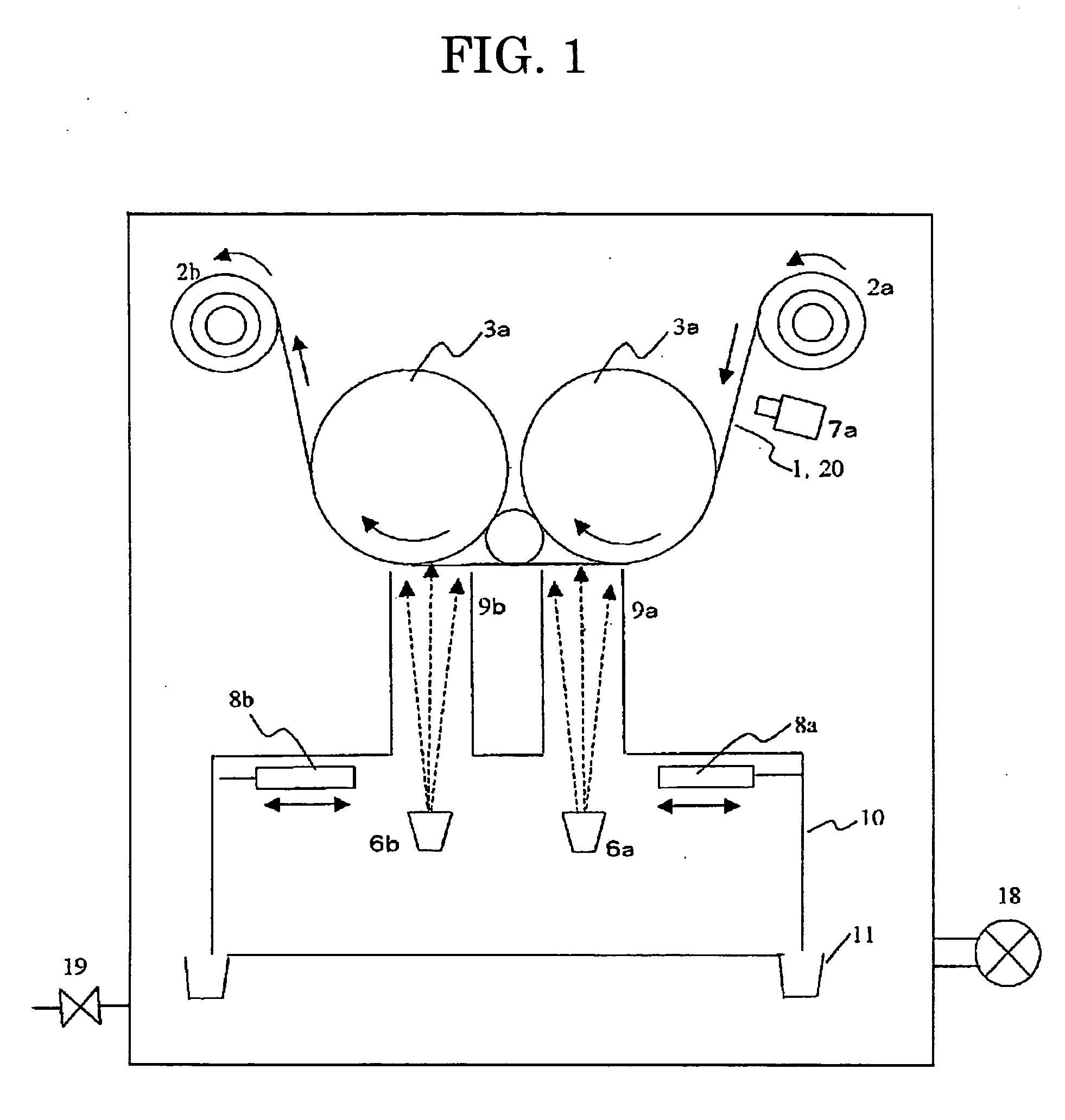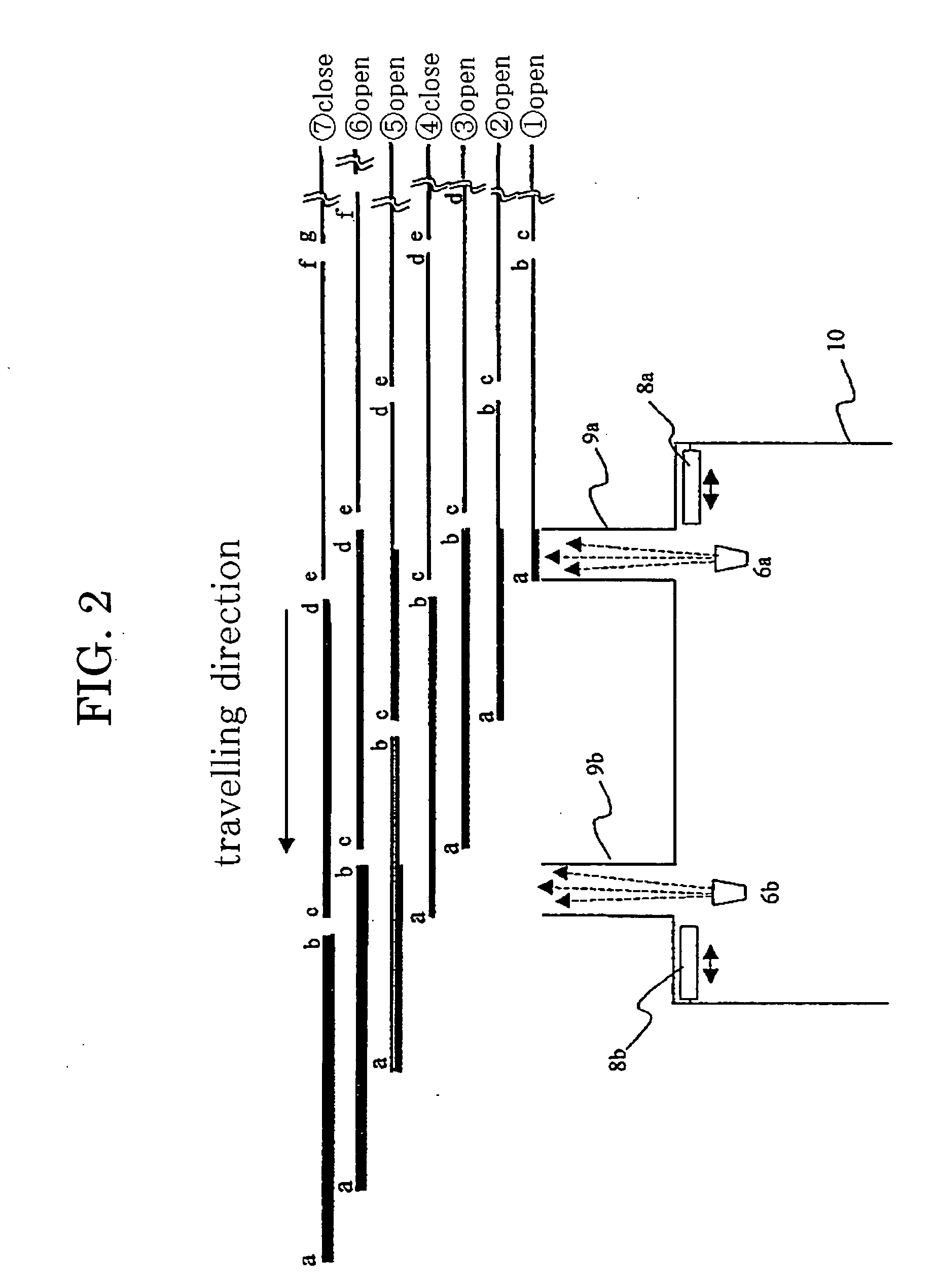Device and method for vacuum film formation
- Summary
- Abstract
- Description
- Claims
- Application Information
AI Technical Summary
Benefits of technology
Problems solved by technology
Method used
Image
Examples
first example
[0056] In the first example, a process for patterning a film made of silicon-lithium alloy (SiLi) on a patterned graphite as an anode of a non-aqueous electrolyte secondary battery by using the vacuum deposition apparatus of FIG. 1 is exemplified, wherein the surfaces of an anode collector (copper film) were patterned one by one. It is to be noted that evaporation sources (6a to td) each including the silicon-lithium alloy (SiLi) were used in the following examples and the comparative examples.
[0057] As shown in FIG. 4, a copper foil 20 having a length of about 2000 meters and a thickness of 10 μm was used as a flexible substrate constituting an anode collector, on which a layer 21a made of graphite was deposited. This graphite layer 21a was obtained by admixing polyvinylidene fluoride, wherein graphite powder was dissolved in N-methyl-2-pyrrolidone as a binder, and a conductivity-affording agent to obtain a paste, coating the resultant paste on both surfaces of the copper foil 20 ...
second example
[0077] In the second example, a vacuum deposition apparatus for patterning a film made of silicon-lithium alloy (SiLi) on a patterned graphite as an anode of a non-aqueous electrolyte secondary battery by using a vacuum throughout the process, wherein both the surfaces of an anode collector (copper film) were patterned, and a method for using the apparatus will be described.
[0078] The copper foil attached with graphite was similar to that used in the first example. FIG. 9 schematically shows the internal configuration of the vacuum evaporation apparatus for forming a SiLi layer 21b on the specified positions (graphite layers 21a) of both the top and bottom surfaces of the copper foil 20 shown in FIG. 4. The rollers for procedures from the feed to the take-up of the copper foil 20 include a feed roller 2a for feeding the copper foil 20, two guide rollers 3a provided for accurately moving the copper foil 20 to accurately deposit evaporated substance from the evaporation sources (6a a...
PUM
| Property | Measurement | Unit |
|---|---|---|
| Shape | aaaaa | aaaaa |
| Electrical conductor | aaaaa | aaaaa |
Abstract
Description
Claims
Application Information
 Login to View More
Login to View More - R&D
- Intellectual Property
- Life Sciences
- Materials
- Tech Scout
- Unparalleled Data Quality
- Higher Quality Content
- 60% Fewer Hallucinations
Browse by: Latest US Patents, China's latest patents, Technical Efficacy Thesaurus, Application Domain, Technology Topic, Popular Technical Reports.
© 2025 PatSnap. All rights reserved.Legal|Privacy policy|Modern Slavery Act Transparency Statement|Sitemap|About US| Contact US: help@patsnap.com



